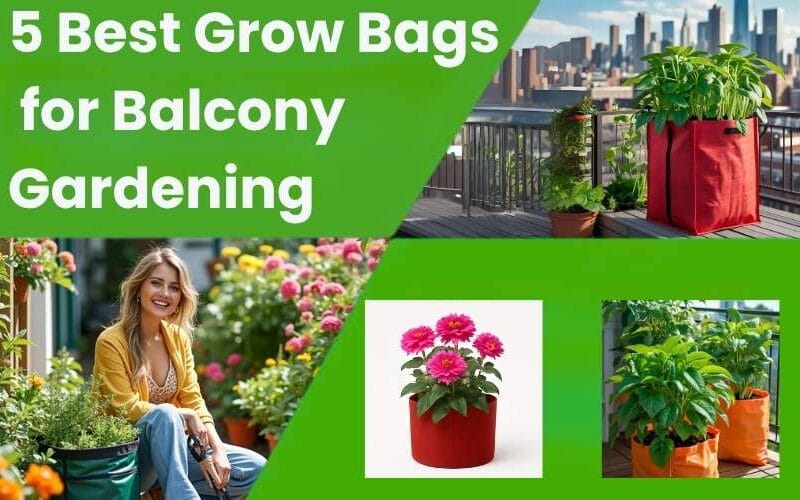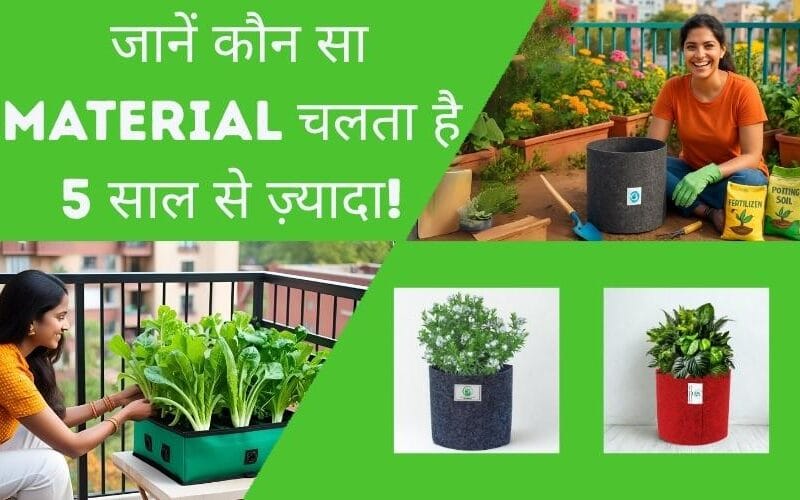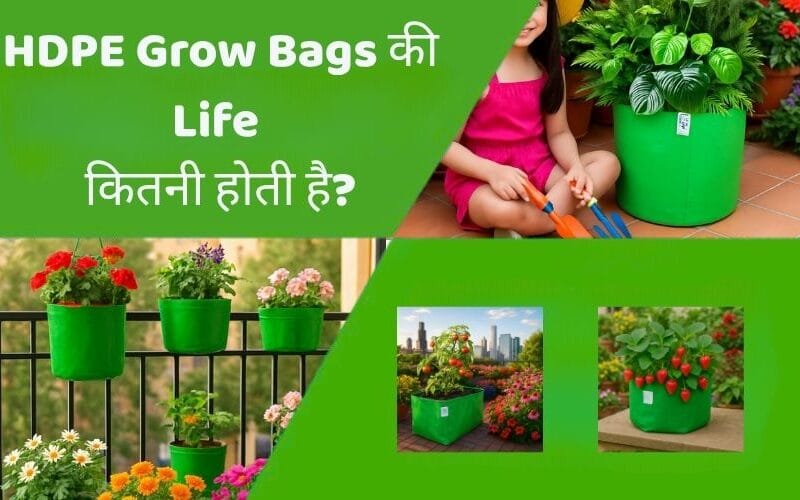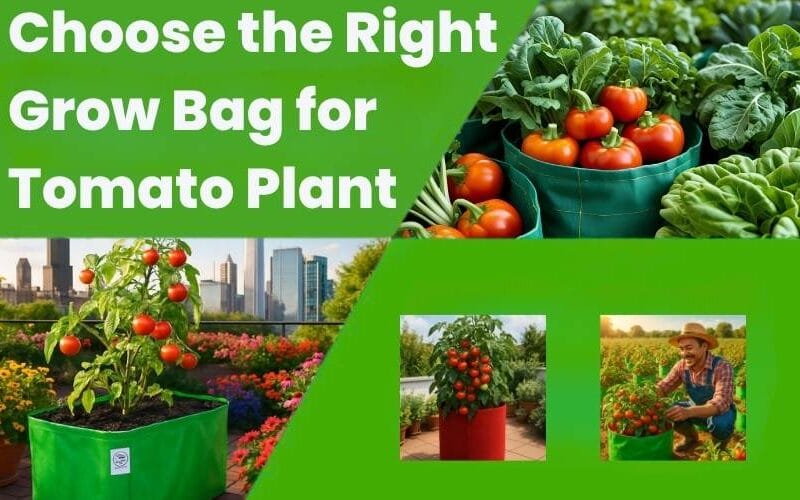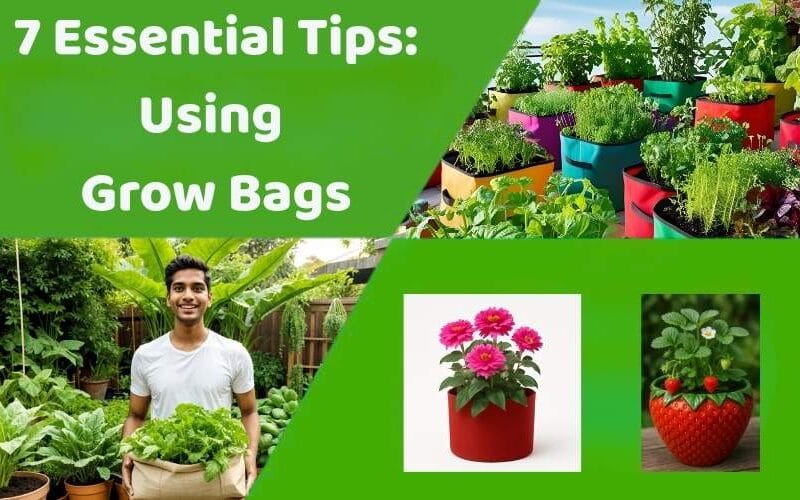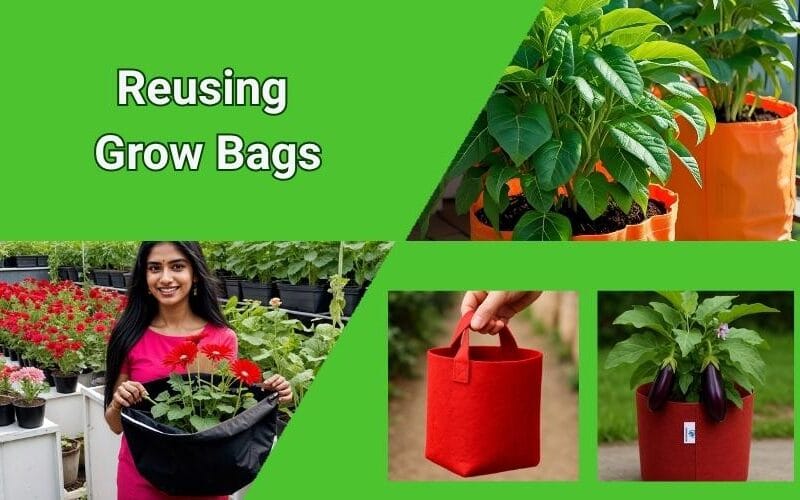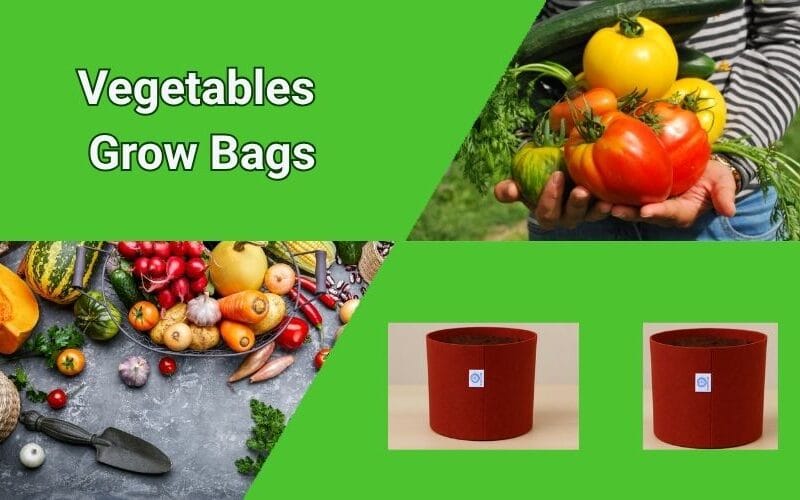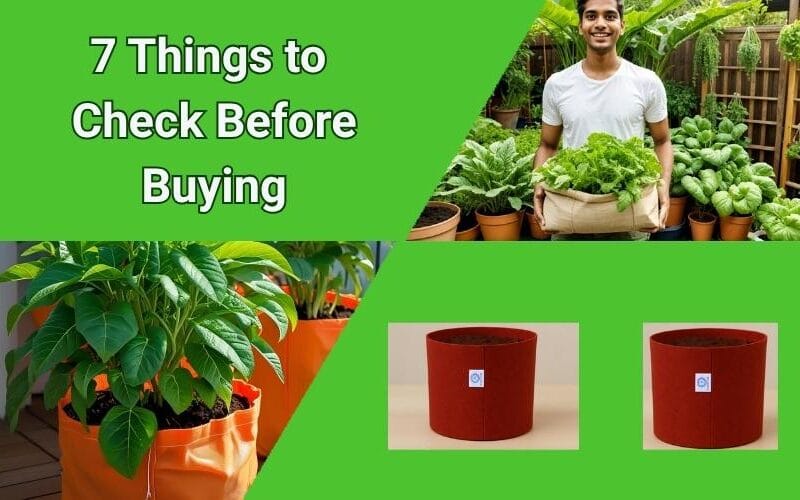Reusing Grow Bags: Your Smart Guide to a Sustainable Garden!
Grow bags have revolutionized home gardening, especially in urban spaces. They’re lightweight, offer great drainage, and make it easy to grow fresh vegetables, fruits, and flowers just about anywhere – balconies, patios, rooftops, or small yards.
But after a season of bountiful harvest, you might wonder, “What do I do with these bags now?” Discarding them after just one use isn’t very eco-friendly, is it? That’s where the concept of reusing grow bags comes in.
Reusing grow bags is not just good for the planet; it’s also smart gardening practice that saves you money and effort in the long run. It’s a key step towards creating a truly sustainable garden.
If you want to reduce waste, save costs, and contribute to a healthier environment through your gardening, learning how to effectively reusing grow bags is essential. It’s easier than you might think!
Let’s explore why reusing grow bags is a sustainable solution and how you can do it with 5 simple steps.
Why Reusing Grow Bags is a Sustainable Gardening Solution:
Choosing to reuse your grow bags offers several key benefits:
Reduces Waste: The most obvious benefit! Reusing grow bags means fewer bags end up in landfills, reducing plastic waste and your environmental footprint.
Saves Money: Why buy new bags every season when you can use the ones you already have? Reusing grow bags significantly cuts down on your gardening expenses.
Resource Efficiency: Producing new grow bags requires energy and raw materials. By reusing grow bags, you reduce the demand for new products, conserving valuable resources.
Supports Circular Economy: Reusing items keeps them in use longer, moving away from a linear “take-make-dispose” model towards a more sustainable circular one. Your choice to reuse contributes to this.
Convenience: Having cleaned, ready-to-use grow bags stored away makes starting your next gardening season faster and easier.
5 Simple Steps for Reusing Grow Bags Effectively:
Follow this easy guide to prepare your grow bags for future use:
Step 1: Empty the Bag
Once the harvesting season is over or the plant has finished its lifecycle, carefully empty the contents of the vegetable growing bag. Discard the old plant material (roots, stems, leaves) into your compost bin. The old potting mix can often be added to compost or used as a soil amendment in garden beds, but avoid reusing it directly in containers as its structure and nutrients are depleted.
Step 2: Clean the Bag
Brush off any loose soil or debris from the inside and outside of the planting bag for garden. If the bag is particularly dirty or if the previous plant showed signs of disease, you can give it a light wash. A hose or a dip in a tub of water is usually sufficient. For disease concerns, a mild disinfectant solution (like diluted bleach, rinse very thoroughly) or even just hot water can help, but ensure you rinse out all traces of cleaner. Air dry completely.
Step 3: Inspect for Damage
Once the bag is clean and dry, inspect it thoroughly for any tears, holes (other than the intended drainage), or signs of material degradation. High-quality fabric grow bags are durable, but wear and tear can happen. A small tear near the top might be acceptable, but large rips or damage to the base mean the bag might not hold soil effectively and should be retired (and hopefully recycled if possible). This step ensures your reusing grow bags plan is viable.
Step 4: Store Properly
Proper storage is key to ensuring your reusing grow bags last. Fold or roll the clean, dry bags neatly. Store them in a cool, dry place away from direct sunlight, which can degrade the material over time. Garages, sheds, or even a closet work well. Protect them from rodents or pests if necessary.
Step 5: Prepare for the Next Season
When it’s time to plant again, take out your stored grow bags. Fill them with fresh, high-quality potting mix. Add some compost or slow-release organic fertilizer to give your new plants a nutrient boost. Your recycled grow bags are now ready to host another season of healthy, productive growth!
👇 Explore more gardening tips in this post
Conclusion:
Reusing grow bags is a simple yet powerful way to make your gardening practice more sustainable, economical, and efficient. By taking a few easy steps to clean and store your bags after each season, you extend their lifespan and contribute to a healthier planet.
Embrace the concept of reusing grow bags and enjoy the benefits of a truly sustainable garden year after year!
Grow Bag Size Chart
| Size (L x W x H) | Suitable Plants | Buy Now | |
|---|---|---|---|
| 6x6 inch Geo Fabric | तुलसी, धनिया, पुदीना, अजवाइन, हरा प्याज, गेंदा | Buy Now | |
| 9x9 inch Geo Fabric | तुलसी, मिर्च, धनिया, गुलाब, पोदीना, टमाटर | Buy Now | |
| 8x8 inch Geo Fabric | तुलसी, मिर्च, पुदीना, धनिया, | Buy Now | |
| 24x24 inch Geo Fabric | अंजीर, अमरूद, स्ट्रॉबेरी, ड्रैगन फ्रूट, कीवी, पैशन फ्रूट | Buy Now | |
| 18x9 inch Geo Fabric | पालक, मेथी, धनिया, पुदीना, अजवाइन, हरा प्याज | Buy Now | |
| 18x18 inch Geo Fabric | Strawberry, Lemon, Dwarf Mango, Tomato, Cucumber | Buy Now | |
| 9x9 inch HDPE Green | तुलसी, मिर्च, धनिया, गुलाब, पोदीना, टमाटर | Buy Now | |
| 36x12x12 inch HDPE Green | टमाटर, भिंडी, बैंगन, लौकी, कद्दू, फूलगोभी | Buy Now | |
| 24x9 inch HDPE Green | पालक, मेथी, धनिया, पुदीना, , सिलंट्रो | Buy Now | |
| 24x9 inch Grey | पालक, मेथी, धनिया, पुदीना, हरा प्याज, सिलंट्रो | Buy Now | |
| 24x6 inch HDPE Green | पालक, मेथी, धनिया, पुदीना, हरा प्याज, सिलंट्रो | Buy Now | |
| 24x12x12 inch HDPE Green | टमाटर, मिर्च, बैंगन, भिंडी, हरा धनिया, पालक | Buy Now | |
| 24x12 inch HDPE Green | स्ट्रॉबेरी, अंजीर, नींबू, ब्लूबेरी, लेमन ग्रास, टमाटर | Buy Now | |
| 18x18 inch HDPE Green | Strawberry, Lemon, Dwarf Mango, Tomato, Cucumber | Buy Now | |
| 18x12x9 inch HDPE Green | टमाटर, मिर्च, बैंगन, भिंडी, हरा धनिया, पालक | Buy Now | |
| 18x12x12 inch HDPE Green | टमाटर, मिर्च, बैंगन, भिंडी, हरा धनिया, पालक | Buy Now | |
| 16x10x8 inch HDPE Green | टमाटर, मिर्च, बैंगन, भिंडी, हरा धनिया, पालक | Buy Now | |
| 15x6 inch HDPE Green | Strawberry, Green Chili, Mint, Tulsi, Baby Spinach | Buy Now | |
| 15x6 inch Black | Strawberry, Green Chili, Mint, Tulsi, Baby Spinach | Buy Now | |
| 15x18 inch HDPE Green | Strawberry, Lemon, Mint, Green Chili, Spinach, Coriander | Buy Now | |
| 15x15 inch Red | Strawberry, Lemon, Mint, Green Chili, Spinach, Coriander | Buy Now | |
| 15x15 inch HDPE Green | Strawberry, Lemon, Mint, Green Chili, Spinach, Coriander | Buy Now | |
| 15x15 inch Black | Strawberry, Lemon, Mint, Green Chili, Spinach, Coriander | Buy Now | |
| 12x6 inch HDPE Green | Mint, Tulsi, Coriander, Green Chili, Baby Spinach | Buy Now | |
| 12x18 inch HDPE Green | Buy Now | ||
| 12x16 inch HDPE Green | Strawberry, Lemon, Green Chili, Mint, Spinach, Coriander | Buy Now | |
| 12x12 inch Red | Strawberry, Green Chili, Mint, Coriander, Baby Spinach | Buy Now | |
| 12x12 inch HDPE Green | Strawberry, Green Chili, Mint, Coriander, Baby Spinach | Buy Now | |
| 12x12 inch Grey | Strawberry, Green Chili, Mint, Coriander, Baby Spinach | Buy Now | |
| 12x12 inch Black | Strawberry, Green Chili, Mint, Coriander, Baby Spinach | Buy Now | |
| 12x10 inch HDPE Green | Strawberry, Green Chili, Mint, Coriander, Baby Spinach | Buy Now | |
| 10x6 inch HDPE Green | Mint, Tulsi, Coriander, Green Chili | Buy Now | |
| 10x10 inch Red | Mint, Tulsi, Coriander, Green Chili | Buy Now | |
| 10x10 inch HDPE Green | Mint, Tulsi, Coriander, Green Chili | Buy Now | |
| 10x10 inch Grey | Mint, Tulsi, Coriander, Green Chili | Buy Now | |
| 10x10 inch Black | Mint, Tulsi, Coriander, Green Chili | Buy Now |
Reusing Grow Bags – Frequently Asked Questions (FAQs)
Q1: Is it safe for plants if I’m reusing grow bags?
A: Yes, it is safe, provided you clean the bag thoroughly between uses and always use fresh potting mix. This prevents the carry-over of diseases or pests.
Q2: How many times can I reuse my grow bags?
A: The lifespan depends on the quality of the bag. High-quality fabric reusing grow bags can often last for 3 to 5 seasons or even more.
Q3: Do I need to wash my grow bags before reusing?
A: It’s highly recommended to brush off old soil. Washing is optional but a good practice, especially if the previous plant had issues. Make sure they are completely dry before storing.
Q4: Can I reuse the soil that was in the grow bags?
A: It’s generally not recommended to reuse old potting mix directly in containers as its structure breaks down and nutrients are depleted. It’s best added to compost or used to improve garden beds.
Q5: What if a plant in a grow bag had a disease? Should I still reuse the bag?
A: If a plant had a serious soil-borne disease, it’s safest not to reuse that specific bag, or to sterilize it thoroughly (e.g., with a strong disinfectant and extensive rinsing) before use. For common issues, thorough cleaning might be enough, but discarding is the safest option to prevent disease spread.
Q6: Are fabric grow bags easier for reusing than plastic ones?
A: Both can be reused. Fabric bags are easier to clean and fold for storage. Plastic bags (if durable) also last, but ensure their drainage holes are clear.



